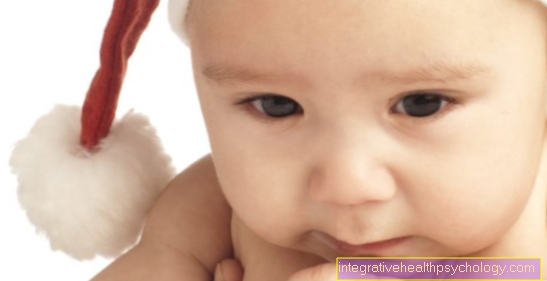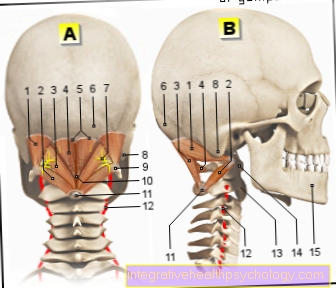Running - the endurance sport for body and mind
This article was edited together with joggen-online.de.
Joggen Online is a comprehensive jogging magazine and a search engine that unites hundreds of sports shops, making it easier to find sports equipment.
introduction
Running is the ideal sport for all age groups and for all budgets because it does not require expensive equipment or expensive accessories.
With a pair of running shoes and appropriate sportswear on, running can be practiced anywhere and stimulate both body and mind.
Just three units per week of 30 minutes each are enough to significantly increase fitness within a short period of time, to train the cardiovascular system effectively, to strengthen the muscles and to increase physical resistance and performance.
In addition, the body burns more calories when running than when doing comparable sports.
Regular exercise also has a positive effect on the ability to concentrate, the memory and the general mood.
Running also reduces stress and improves sleep.
But what is the best way to start running, where do I run, how fast and for how long is it most effective and what else should I watch out for?
These questions are answered below.
Also read how you can train your endurance at home:
Endurance training at home

Correct posture while running
All runners develop their own running style over time.
However, this should comply with the basic technical standards, because the optimal posture not only facilitates the flow of movement while running, but also increases speed and saves energy.
Basically, care should be taken to maintain an upright posture, while the arms are loosely swinging back and forth next to the body.
The swinging of the arms is a reflex that the body automatically performs to stabilize the posture. The runner only has to be careful to form a triangle between the trunk, upper arm and forearm when the arm swings backwards, because this increases the momentum.
In addition, excessively large steps should be avoided in order not to slow down the body unintentionally or to waste energy.
Instead, it is advisable to place your foot just in front of the body axis - so the stride length is neither too long nor too short - to stretch the leg with every step and roll it over the entire foot.
Correct posture while running can not only increase speed and conserve energy reserves, it also prevents back pain.
In order to be able to maintain the upright posture optimally during the entire run, targeted additional training of the lower back area and the abdominal muscles is advantageous, as both parts support the torso.
Regular ABC training helps to coordinate the movement sequences more easily and also to discard an incorrect running style that has long been cultivated.
Breathing also needs to be learned
In addition to posture, breathing also plays an elementary role when running.
Although it is subject to the respiratory reflex in humans, i.e. it runs unconsciously and automatically, performance can still be positively influenced by breathing if one is aware of it.
For example, the performance of long-distance runners is largely determined by the ability to absorb oxygen.
A lack of oxygen in the muscles leads to an increased formation of lactate, which leads to a decrease in performance.
In order to optimize performance through breathing, it is therefore advisable to integrate regular breathing exercises into the training plan as well as strength training and endurance runs.
Because breathing training - especially through conscious, deep exhalation - can increase the maximum oxygen absorption capacity (VO2max for short), so that the body has more oxygen available when running.
This raises the threshold to anaerobic metabolism and the well-supplied muscles can work longer and faster.
In order to breathe in as deeply as possible, you must first breathe out completely.
This is mainly made possible by deep diaphragmatic breathing (abdominal breathing), in which both the upper and lower areas of the lungs are flooded with air.
While shallow breathing in the chest prevents a complete exchange of air in the lungs, the air inhaled with diaphragmatic breathing also reaches the lower regions of the lungs, where it remains longer and thus leads to an increase in oxygen uptake.
Find the right training pace
It is not always easy to find the right training speed, especially for beginners.
Often people start too quickly, which demands too much from the inexperienced organism and can lead to exhaustion quickly set in.
So the hoped-for success does not materialize and the desire to run disappears.
Even those who run slowly do a lot for their health: even a moderate speed is good training for the cardiovascular system.
Slow running stabilizes the passive musculoskeletal system, improves blood circulation and increases the oxygen stores in the muscles.
In addition, the immune system is strengthened.
If you don't overdo it with the pace, you also have the advantage that the regeneration time is shortened and you are fit again faster.
However, anyone who does not feel well after running and struggles with sore muscles has done too much of a good thing.
An important rule of thumb is that the running pace is correct and healthy when you can still chat without getting out of breath.
Lone exercisers can also use a heart rate monitor to determine the optimal running pace.
At the end of the training run, it is also not advisable to stop suddenly.
Instead, the last five to ten minutes of the run should be covered at a very slow training pace and thus run out.
The optimal training duration for success
Determining the ideal training duration is not that easy.
It should bring about a continuous increase in performance without harming your health.
If the training time is excessively excessive, this can lead to overuse of the body, which can then no longer process the training stimuli appropriately and can no longer withstand the stress.
On the one hand, the consequences are a weakened organism that is more susceptible to illnesses and injuries.
On the other hand, the athletic goals are also missed, since the runners do not get better and faster, but worse and slower, if the exercise duration is too long.
The aim of running training should therefore be to induce the organism to adapt to the stimuli by gradually increasing the load.
As the metabolic processes improve in this way, the performance of the runners increases over time.
But in order to find the optimal training duration, several factors have to be considered.
In addition to age, experience and athletic fitness are particularly important.
It's not just older runners who are not allowed to overuse themselves during the duration of their training, young athletes who have only recently started running also have to slowly bring their bodies to the unfamiliar stress.
In addition, training success and health wellbeing also depend on the correct posture, personal running style and running technique.
During training, the movement sequences should therefore be checked and corrected if necessary.
Correct posture and small steps require less effort, so that the energy can be used to increase the running time.
For beginners in particular, useful running training could be structured in such a way that one or two days of training are followed by a day of rest.
Creating a diary can help to adapt the stress and relief phases sensibly to your own requirements.
The signals of the body should be considered when looking for the right training duration.
Running and stretching - yes or no?
Today's everyday life mainly takes place while sitting.
This way of life leads to a shortening of certain muscle groups in the long run, as they lose length and flexibility in the long run if they are motionless in one position for a long time.
The consequences are restricted mobility, poor posture and pain.
Stretching is intended to counteract this and to ensure that muscles, tendons and ligaments of the musculoskeletal system remain elastic, joint mobility is improved and the risk of running injuries is reduced.
However, it should only be stretched in a well-warmed state so as not to cause injuries.
Stretching exercises are therefore useful, for example, after light running training and after strength and core stabilization exercises.
Static stretching is generally favored.
It is characterized by carefully adopting the stretching position and then holding the stretching tension for each muscle for around 20 seconds.
Each exercise should be done two to three times per side, although problem areas can also be stretched more often.
However, the pain threshold should always be taken into account, as the counter-tension of the muscle will otherwise not lead to relaxation.
However, stretching the muscles is not enough to reduce the risk of injury while running.
Strength training for the antagonists, i.e. the muscular opponents, is always a part of it, in order to avoid or correct imbalances.
Extensive stretching of the muscles immediately before a race is counterproductive, as the muscle tension required for the race is too low due to the previous stretch.
Before fast running units, only light stretching exercises are useful, which can be combined with short increase runs in order to put the muscles in the necessary tension. Even runners with hypermobility not only get no benefit from stretching before and after running, but rather increase their problems.
Stabilization exercises are better suited for those affected.
In addition, stretching should be done after a strenuous competition or when the muscles are sore, e.g. after a hard running training, generally refrain from doing it.
On the one hand, in order not to increase the muscular damage caused by the running load, on the other hand, in order not to disrupt the repair processes of the damaged muscles.
In these cases, swimming or walks are more useful than stretching and stretching, but also warm baths.
You can find more information on the subject in the running magazine at joggen-online.de.





























